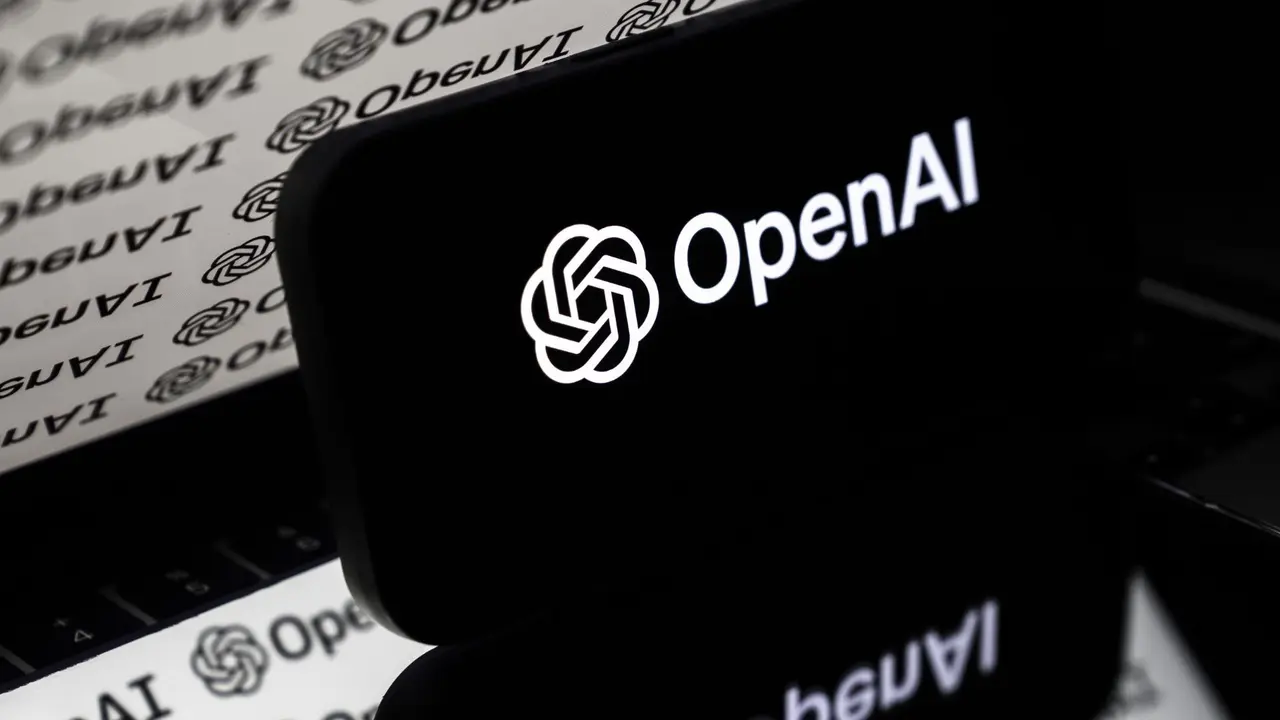AI Breakthrough Enhances Fusion Energy Monitoring and Control
2 Sources
2 Sources
[1]
New AI enhances the view inside fusion energy systems
Imagine watching a favorite movie when suddenly the sound stops. The data representing the audio is missing. All that's left are images. What if artificial intelligence (AI) could analyze each frame of the video and provide the audio automatically based on the pictures, reading lips and noting each time a foot hits the ground? That's the general concept behind a new AI that fills in missing data about plasma, the fuel of fusion, according to Azarakhsh Jalalvand of Princeton University. Jalalvand is the lead author on a paper about the AI, known as Diag2Diag, that was recently published in Nature Communications. "We have found a way to take the data from a bunch of sensors in a system and generate a synthetic version of the data for a different kind of sensor in that system," he said. The synthetic data aligns with real-world data and is more detailed than what an actual sensor could provide. This could increase the robustness of control while reducing the complexity and cost of future fusion systems. "Diag2Diag could also have applications in other systems such as spacecraft and robotic surgery by enhancing detail and recovering data from failing or degraded sensors, ensuring reliability in critical environments." The research is the result of an international collaboration between scientists at Princeton University, the U.S. Department of Energy's (DOE) Princeton Plasma Physics Laboratory (PPPL), Chung-Ang University, Columbia University and Seoul National University. All of the sensor data used in the research to develop the AI was gathered from experiments at the DIII-D National Fusion Facility, a DOE user facility. The new AI enhances the way scientists can monitor and control the plasma inside a fusion system and could help keep future commercial fusion systems a reliable source of electricity. "Fusion devices today are all experimental laboratory machines, so if something happens to a sensor, the worst thing that can happen is that we lose time before we can restart the experiment. But if we are thinking about fusion as a source of energy, it needs to work 24/7, without interruption," Jalalvand said. AI could lead to compact, economical fusion systems The name Diag2Diag originates from the word "diagnostic," which refers to the technique used to analyze a plasma and includes sensors that measure the plasma. Diagnostics take measurements at regular intervals, often as fast as a fraction of a second apart. But some don't measure the plasma often enough to detect particularly fast-evolving plasma instabilities: sudden changes in the plasma that can make it hard to produce power reliably. There are many diagnostics in a fusion system that measure different characteristics of the plasma. Thomson scattering, for example, is a diagnostic technique used in doughnut-shaped fusion systems called tokamaks. The Thomson scattering diagnostic measures the temperature of negatively charged particles known as electrons, as well as the density: the number of electrons packed into a unit of space. It takes measurements quickly but not fast enough to provide details that plasma physicists need to keep the plasma stable and at peak performance. "Diag2Diag is kind of giving your diagnostics a boost without spending hardware money," said Egemen Kolemen, principal investigator of the research who is jointly appointed at PPPL and Princeton University's Andlinger Center for Energy and the Environment and the Department of Mechanical and Aerospace Engineering. This is particularly important for Thomson scattering because the other diagnostics can't take measurements at the edge of the plasma, which is also known as the pedestal. It is the most important part of the plasma to monitor, but it's very hard to measure. Carefully monitoring the pedestal helps scientists enhance plasma performance so they can learn the best ways to get the most energy out of the fusion reaction efficiently. For fusion energy to be a major part of the U.S. power system, it must be both economical and reliable. PPPL Staff Research Scientist SangKyeun Kim, who was part of the Diag2Diag research team, said the AI moves the U.S. toward those goals. "Today's experimental tokamaks have a lot of diagnostics, but future commercial systems will likely need to have far fewer," Kim said. "This will help make fusion reactors more compact by minimizing components not directly involved in producing energy." Fewer diagnostics also frees up valuable space inside the machine, and simplifying the system also makes it more robust and reliable, with fewer chances for error. Plus, it lowers maintenance costs. AI approaches to stabilizing fusion plasma The research team also found that the AI data supports a leading theory about how one method for stopping plasma disruptions works. Fusion scientists around the world are working on ways to control edge-localized modes (ELMs), which are powerful energy bursts in fusion reactors that can severely damage the reactor's inner walls. One promising method to stop ELMs involves applying resonant magnetic perturbations (RMPs): small changes made to the magnetic fields used to hold a plasma inside a tokamak. PPPL is a leader in ELM-suppression research, with recent papers on AI and traditional approaches to stopping these problematic disruptions. One theory suggests that RMPs create "magnetic islands" at the plasma's edge. These islands cause the plasma's temperature and density to flatten, meaning the measurements were more uniform across the edge of the plasma. "Due to the limitation of the Thomson diagnostic, we cannot normally observe this flattening," said PPPL Principal Research Scientist Qiming Hu, who also worked on the project. "Diag2Diag provided much more details on how this happens and how it evolves." While magnetic islands can lead to ELMs, a growing body of research suggests they can also be fine-tuned using RMPs to improve plasma stability. Diag2Diag generated data that provided new evidence of this simultaneous flattening of both temperature and density in the pedestal region of the plasma. This strongly supports the magnetic island theory for ELM suppression. Understanding this mechanism is crucial for the development of commercial fusion reactors. The scientists are already pursuing plans to expand the scope of Diag2Diag. Kolemen noted that several researchers have already expressed interest in trying the AI. "Diag2Diag could be applied to other fusion diagnostics and is broadly applicable to other fields where diagnostic data is missing or limited," he said.
[2]
Princeton AI restores missing fusion data to improve reactor control
This AI is designed to enhance the monitoring and control of the plasma fuel in fusion devices. The picture shows SMall Aspect Ratio Tokamak (SMART). An international team of scientists has developed an artificial intelligence capable of creating highly detailed data inside a fusion reactor, effectively acting as a virtual sensor. The AI, called Diag2Diag, is designed to improve the monitoring and control of the plasma fuel in fusion devices, a step that could lead to more reliable and economical fusion power plants. The technology functions by analyzing the measurements from existing sensors to generate new, synthetic data for another sensor that may be failing or too slow to capture key events.
Share
Share
Copy Link
Scientists develop Diag2Diag, an AI system that generates synthetic sensor data for fusion reactors, potentially revolutionizing plasma monitoring and control in fusion energy systems.

Revolutionizing Fusion Energy Monitoring with AI
An international team of scientists has developed a groundbreaking artificial intelligence system called Diag2Diag, designed to enhance the monitoring and control of plasma in fusion energy systems. This innovative AI has the potential to revolutionize the field of fusion energy by improving data collection, reducing costs, and increasing the reliability of future commercial fusion reactors
1
2
.The Power of Synthetic Data Generation
Diag2Diag, developed by researchers from Princeton University, the U.S. Department of Energy's Princeton Plasma Physics Laboratory (PPPL), and several other institutions, functions as a virtual sensor within fusion reactors. The AI analyzes data from existing sensors to generate synthetic data for other sensors that may be failing or too slow to capture critical events
1
.Azarakhsh Jalalvand, the lead author of the study published in Nature Communications, explains, 'We have found a way to take the data from a bunch of sensors in a system and generate a synthetic version of the data for a different kind of sensor in that system'
1
.Enhancing Plasma Control and Stability
One of the key advantages of Diag2Diag is its ability to provide more detailed information than actual sensors, particularly in critical areas such as the plasma edge, also known as the pedestal. This enhanced monitoring capability allows scientists to better control plasma stability and optimize fusion reaction efficiency
1
.The AI system has shown promise in supporting a leading theory about methods for stopping plasma disruptions, specifically in controlling edge-localized modes (ELMs) – powerful energy bursts that can severely damage fusion reactors
1
.Related Stories
Towards More Compact and Economical Fusion Systems
Egemen Kolemen, the principal investigator of the research, highlights the cost-saving potential of Diag2Diag: 'Diag2Diag is kind of giving your diagnostics a boost without spending hardware money'
1
.PPPL Staff Research Scientist SangKyeun Kim emphasizes that this AI technology could lead to more compact and economical fusion systems. By reducing the number of physical diagnostics required in future commercial reactors, Diag2Diag could help minimize components not directly involved in energy production, thereby lowering maintenance costs and improving overall system reliability
1
.Broader Applications and Future Prospects
The potential applications of Diag2Diag extend beyond fusion energy. Jalalvand suggests that the AI could be valuable in other critical environments, such as spacecraft and robotic surgery, where enhancing sensor detail and recovering data from failing or degraded sensors is crucial
1
.As fusion energy research progresses towards commercial viability, innovations like Diag2Diag play a vital role in addressing the challenges of creating stable, efficient, and economical fusion power plants. This AI breakthrough represents a significant step forward in the quest to harness the power of the stars and provide a clean, virtually limitless energy source for the future.
References
Summarized by
Navi
[2]
Related Stories
AI Breakthrough Accelerates Fusion Reactor Safety Calculations
14 Aug 2025•Science and Research

AI Models Revolutionize Plasma Heating Predictions for Fusion Research
10 Oct 2024•Science and Research

Deep Learning Model Accelerates Plasma Predictions in Nuclear Fusion by 1,000 Times
01 Mar 2025•Science and Research

Recent Highlights
1
AI Chatbots Sway Voters More Effectively Than Traditional Political Ads, New Studies Reveal
Science and Research

2
Google AI glasses set to launch in 2026 with Gemini and Android XR across multiple partners
Technology

3
EU Launches Antitrust Probe Into Google's AI Training Practices and Content Usage
Policy and Regulation




